Dr. Pavlo Ardanov, December 2017.
Edited by Dr Chris Warburton-Brown, October 2019

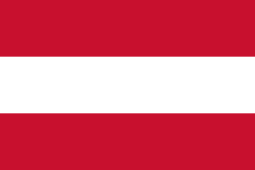
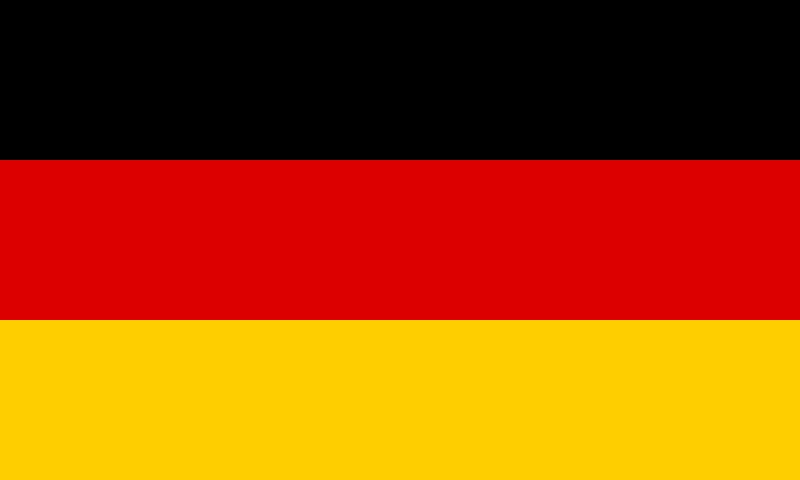
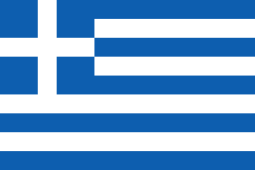
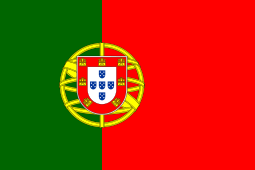
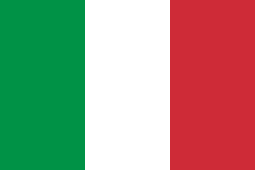
Summary
The annual global value of animal-mediated crop pollination is estimated at $153 billion, while pollination deficit exists in many agriculture areas. A literature search in ScienceDirect using the keyword ‘pollinator’ retrieved more than 30900 results. The first 1000 results (sorted by relevance) were analyzed, including all review articles and research articles focused on Europe and temperate climate. Main pollinator management practices are also reviewed in this article.
Key findings: Landscape diversification increases availability and access to foraging resources and nesting sites for pollinators, facilitates their migration and increases large scale redundancy of pollination services. Creating additional, diverse uncropped habitats from annual and perennial flowers will encourage pollinators by providing nectar and pollen resources throughout their active foraging period and during resource-limited times (‘bridging’ plants). Inclusion of prolifically flowering plants in sown floral strips and sowing into wildflower strips can buffer periods of resource shortage and can provide constant resource supply if designed as a flowering sequence. Allowing natural wildflower regeneration or protecting vegetation at the field margins will improve crop pollination and biological pest and weed control. Restoration of habitats that provide forage and nesting resources and facilitate pollinator movement has the potential to support improved pollination services across both natural and human-altered landscapes.
Introduction
Pollinators are important for the reproduction and genetic viability of more than 65% of the world’s wild plants (90% of flowering plants) or 30,000 plant species (Kearns, Inouye & Waser 1998, Ashman et al. 2004, Buchmann, Nabhan 2012). The annual global value of animal-mediated crop pollination is estimated at $153 billion (Gallai et al. 2009).
There is increasing evidence that several species and groups of pollinators and the plants they pollinate are negatively affected by environmental change in many locations in the world (reviewed in Wratten et al. 2012, Senapathi et al. 2015), and that pollination deficits are further aggravated in agricultural landscapes (reviewed in Garibaldi et al. 2017). A 10% increase in the area of natural and semi-natural habitat could return around a 37% increase in wild bee abundance and species richness (Kennedy et al. 2013).
Pollinator species differ in their nesting and foraging requirements. Therefore, pollinator-friendly landscapes should provide ample nesting and foraging resources for wild pollinator adults and larvae throughout the year (Pufal, Steffan-Dewenter & Klein 2017). In general, management of pollination services must be targeted to support a diverse set of pollinators to maintain taxonomic or functional trait diversity (i.e. species complementarity and functional redundancy), which serves to deliver a diverse set of pollination services even in the face of species losses (Gill et al. 2016, Menz et al. 2011).
The main techniques of habitat management that have positive effects on wild pollinators include: protection and restoration of pollinator habitats; increasing the quality and quantity of floral resources; reducing intensive mechanical practices; reducing chemical inputs; and providing nest sites (Wratten et al. 2012, reviewed in Garibaldi et al. 2017). Pollinator conservation can serve as a useful framework for achieving multiple objectives, such as boosting natural control of pests, improving soil structure and fertility, supporting biodiversity of native plants and wild pollinators, limiting soil erosion and nutrient leaching, and enhancing landscape aesthetics (Wratten et al. 2012).
How to description
Holistic management of pollination services should include the following main steps (Gill et al. 2016, Menz et al. 2011, Jha, Burkle & Kremen 2013):
- For each flowering crop and main variety cultivated in a given landscape, identify whether pollination is needed (whether pollination deficit exists) and which pollinators are likely to provide this service.
- Identify the main pollinators for cultivated crops. Consider their nesting preferences and floral resource needs across their foraging periods
- Assess the landscape in which the crops are produced for alternative floral and nesting resources throughout the pollinators activity period and identify potential resource gaps.
- Plant ‘framework’ plants, which provide considerable nectar and pollen necessary for supporting large pollinator numbers, and ‘bridging’ plants, which provide resources during resource poor time periods. Use plant species that will not encourage crop pests or diseases and prioritize non-weedy native species visited by the largest number of target pollinators. Carry out small-scale trials first to compare different establishment methods across a range of soil and climatic conditions, and measure usage by pollinators and how this is enhanced within adjacent crops. Then conduct larger-scale trials of engineered habitats, at the landscape scale whenever possible.
- Evaluate the economic implications of removing land from production to provide pollination services, in comparison to the increase in crop value (a type of cost-benefit analysis).
The main pollinator management practices are reviewed below in more depth including their specifics, additional considerations for implementation and a ‘how to’ description.
1. Landscape diversification
Optimizing habitat heterogeneity and connectedness can increase availability and access to foraging resources and nesting sites for pollinators, facilitate their migration and increase large scale redundancy of pollination services (Pufal, Steffan-Dewenter & Klein 2017, Samnegård, Persson & Smith 2011).
The flowering period of single plant species is often short in comparison to the activity period of pollinators (Blüthgen, Klein 2011). Crops differ in the level of pollination and the community of insect pollinators required (Albrecht et al. 2012, Fründ et al. 2013), and pollinator species may also differ in their resource requirements throughout the year (Olesen et al. 2008). Pollination services will be less prone to catastrophic impacts affecting single pollinator-supporting habitats if other unaffected habitats are available in close proximity. Therefore, measures aimed to support pollinators should consider the complex spatial and temporal interactions between different pollinators and habitat elements at the landscape scale (Pufal, Steffan-Dewenter & Klein 2017).
Specifics to consider at landscape scale:
- Different types of habitats: crop fields, gardens, midfield islets, uncultivated and floristically enhanced field margins, lays, riparian buffer strips, verges, parks, natural habitats etc. (Lindgren, Lindborg & Cousins 2018).
- Effective distance between the habitats: from a few hundred meters for some wild bees to several kilometers for honeybees and bumblebees (Danner et al. 2016, Steffan-Dewenter, Kuhn 2003).
- Barriers to the movement of small pollinators (e.g. forests, hedgerows) and influence of management practices: mowing, tilling (usually negative), stock fencing (varying) etc.
- Landscape preferences of different pollinators: butterflies - larval food plants and high flower cover; hoverflies - insect rich cover; bumblebees - burrows; solitary bees - bare ground; bumblebees - rough grassland etc (Garibaldi et al. 2017, Holland et al. 2015).
Additional considerations:
- May be not efficient in landscapes that already have 20% or more pollinator-friendly habitat (Wood, Holland & Goulson 2015).
- Will be more efficient for pollinators with long foraging distances (E Benjamin, R Reilly & Winfree 2014).
- Management of pollination services alone may not result in higher diversity of natural pollinators (Andersson et al. 2014).
- Availability of foraging resources close to pollinator nests may reduce foraging distances and thus pollination of agriculture crops (Wolf, Moritz 2008).
- Generalist pollinators usually benefit from a diverse diet (Di Pasquale et al. 2013, Vaudo et al. 2015).
- Wild bees are usually more important and efficient pollinators than honeybees (Wei et al. 2002, Mallinger, Gratton 2015, Martins, Gonzalez & Lechowicz 2015).
- Requires expert planning, collaboration between private and state land owners, costs for establishment, maintenance, and removing from agriculture production (Isaacs et al. 2017).
How to description
- Identify whether pollination deficit exists for crops.
- Identify the main pollinators of cultivated crops in the region.
- Consider nesting and floral resource needs of the target pollinator groups (e.g. pollen availability during the production of offspring and nectar availability across active foraging period)
- Decide on the location, size, configuration, and longevity of the restoration project.
- Select regionally-adapted plant species, use a robust methodology for establishing plantings and choose plant mixes that bloom over the entire growing season, with special attention to resource poor time periods (e.g. outside of the mass bloom periods of cultivated agriculture crops). (Gill et al. 2016, Jha, Burkle & Kremen 2013, Isaacs et al. 2017)
2. Sown floral strips
Floral strips are additional, diverse uncropped habitats consisting of annual and perennial flowers. They encourage pollinators by providing nectar and pollen resources throughout the active foraging period or during resource-limited times (‘bridging’ plants). Designing flower-rich habitats which include butterfly host plants may reduce the overall amount of land needed for wildlife habitats (Holland et al. 2015). Mixtures of flowering plants with grasses may also suppress some weeds such as thistles (Cirsium) (Pywell et al. 2005, Smith, Firbank & Macdonald 1999).
Specifics
Different plants to include:
- ‘bridging’ plants (flower during resource poor periods)
- mass-flowering plants (help to build bee colony size)
- ‘framework’ plants (provide considerable nectar and/or pollen resources to numerous and diverse pollinator species)
- species with large inflorescences or flowering in dense patches (e.g. ox-eye daisy) to attract more flower visitors
- plants for specialist pollinators (e.g. leguminous plants for long-tongued bumblebees)
- ‘favorite’ plants for different pollinator groups (e.g. oregano, garlic chives, sweet alyssum, buckwheat, bachelor buttons for hoverflies)
(Menz et al. 2011, Jha, Burkle & Kremen 2013, Uyttenbroeck et al. 2017, Goulson 2017, Pywell et al. 2006, Herrmann et al. 2007).
Additional considerations
-
The presence of attractive plant species may result in a higher flower visitation rate, but will not necessarily increase the pollinator species richness (especially if the needs of specialist pollinators are not considered) (Uyttenbroeck et al. 2017). These plants may also compete for pollination with less abundant or attractive crops and native flowering plants (Lopezaraiza–Mikel et al. 2007).
-
Positive effects of flower strips on wild pollinators may take time to materialize, as current population size usually reflects resource availability in the previous year (Roulston, Goodell 2011).
-
Current agri-environment schemes often only support common pollinators (especially bumblebees) (Kovács-Hostyánszki et al. 2016). Proposed plants may be efficient only in a specific region and be weeds in another (Winfree 2010).
How to description
Selection of pollinator-supporting flowering plants: follow a protocol for identifying regionally important forage plants and screening of plant species native to the region for the abundance of pollinators and natural enemies of pests visiting them. High ranked species should be selected for planting schemes based on overlapping blooming periods to ensure constant forage availability through the active season of beneficial insects (Isaacs et al. 2009). Facilitative and competitive interactions between the plants should be considered to select a mix that optimizes both resource availability for pollinators and reproductive capacity for the plants themselves (reviewed in Menz et al. 2011).
3. Prolifically flowering plants
Inclusion of prolifically flowering plants in sown floral strips, and sowing into wildflower strips, can buffer periods of resource shortage or provide constant resource supply if designed as flowering sequence. Early mass-flowering resources may increase bee population, production of bumblebee workers, and enhance the solitary bee population in the next year, while plants flowering late in the season lead to higher bumblebee queen production (Isaacs et al. 2017). Megachilid and halictid bees are active during a shorter period of the growing season, so mass-flowering periods have to be timed correctly (Russo et al. 2013). Continual resource availability over the whole active season is needed by most social and multivoltine (having several broods per season) species (Roulston, Goodell 2011). Mass-flowering crops create resource pulses and spillover of pollinators with an effect on pollination ranging from 250 to 3000 m distance (Westphal, Steffan-Dewenter & Tscharntke 2006).
Additional considerations
- Mostly feasible for supporting managed pollinators, as they may be less good at provision of nesting habitats for wildlife pollinators (Pufal, Steffan-Dewenter & Klein 2017).
- Wild pollinators in mass-flowering crops can be spatially displaced by honeybees, with potential negative consequences for wild pollinator populations and their services (Lindstrom et al. 2016).
- Pollination services of wild pollinators can be more pronounced in field margins than in the center of mass flowering crops (Balzan, Bocci & Moonen 2016).
- Flowering episodes of mass-flowering crops tend to be temporary, occurring in a fraction of the active season of many bee species (Wratten et al. 2012).
- Could have a dilution effect, where pollinator densities in the target crops decrease with an increase in mass flowering areas (Holzschuh et al. 2016, Montero-Castaño, Ortiz-Sánchez & Vilà 2016).
4. Wildflower strips (noncrop buffer strips, field margins, semi-natural habitats)
Allowing natural wildflower regeneration or protecting vegetation at the field margins and boundaries will improve crop pollination and biological pest and weed control (Lindgren, Lindborg & Cousins 2018). In case of natural habitats there is no risk of failure of sown plants.
Wild insect richness is highest in areas of semi-natural habitat. Therefore, whilst sown flower strips can boost abundance of existing species, only large scale preservation of (semi-) natural habitat will maintain pollinator diversity (Campbell et al. 2017).
Large well-considered margins interspersed between large fields might be more effective for wild pollinators than filling the monoculture landscape with lots of small and ineffective margins. But sometimes decreasing monoculture fields is equally important as increasing field margin width to improve crop pollination services (Rands, Whitney 2010).
Additional considerations
- Effects of flower strips is often more apparent on wild pollinators with prolonged flight periods (e.g. bumblebees) (Campbell et al. 2017).
- Increasing wildflower density can draw pollinators away from agricultural crops in monocultures (Rands, Whitney 2010). But some pollinators (e.g. bumblebees) may show an innate preference for the monoculture irrespective of the wild flower population (Forrest, Thomson 2009, Gumbert 2000, Ings, Raine & Chittka 2009, Raine, Chittka 2007).
- Some pollinators (e.g. non-corbiculate and aculeate bees) respond positively to floral diversity (in particular to Asteraceae and Apiaceae wild plants), while others (e.g. honeybees and bumblebees) are more influenced by mass-flowering plants (Wood, Holland & Goulson 2015).
- Wildflower habitats have a positive influence on pollination services irrespective of geographical location (support of native pollinators) (Cole et al. 2015).
How to description
- Relocate and enlarge field margins (ideally over 5 m wide) and allow natural plant regeneration (Cole et al. 2015).
- For very compacted soils initial cultivation (e.g. chisel plowing) or sowing plants with tap roots may accelerate natural regeneration (Wood, Holland & Goulson 2015).
- It is important to enhance wild seed banks within the field margins (Rands, Whitney 2010) (e.g. initial cultivation, structures for resource deposition).
- Sowing additional floral resources, such as mass flowering plants and plants for different feeding niches (e.g. for larval feeding, flowers for specialist pollinators), may increase the number and diversity of pollinators.
- Careful consideration of field margin design might be extremely important for those species which do not travel far (Rands, Whitney 2010).
5. Restoration of native plants in adjacent natural areas
Habitat restoration that provides forage and nesting resources and facilitates pollinator movement has the potential to support improved pollination services across both natural and human-altered landscapes (Jha, Burkle & Kremen 2013). Farms located in close proximity to natural areas can receive all of their pollination services from wild bees alone (Kremen, Williams & Thorp 2002, Kremen et al. 2004, Winfree et al. 2007).
Specifics
- Measures to restore natural pollinator communities by providing suitable habitats around the fields and orchard will also benefit conservation of general biodiversity (Marini et al. 2012).
- The role of natural habitats in supporting native pollinator communities may be more important in extreme conditions such as high altitude, where pollinator species and abundance is lower (Marini et al. 2012).
- The presence of remnant ancient habitats can be critical for the colonization of recently restored habitats (Forup, Memmott 2005, Forup et al. 2008).
Additional considerations
- This measure may have more influence on the abundance of wild rather than managed pollinators (Marini et al. 2012).
- Forest-dominated landscapes may benefit local species richness more than grassland-dominated landscapes.
- Plant populations in restored areas need to be large enough to avoid alee effect - the reduction in fecundity of plants in small populations (Hobbs, Yates 2003, Ghazoul 2005).
- Habitats which are linear in shape may be associated with a reduced number of individual pollinators because linear elements have a higher ratio of edge to interior and pressure from edge-related stressors (Ewers, Didham 2007, Paton 1994).
- Temperate deciduous forests can provide good springtime floral resources for bees, but the forest tends to lack both flowers and bees in the summertime (Heinrich 1976).
How to description
- Restore and protect at least 7.5 – 10% of wildlife habitat within the region (Holland et al. 2015). This will double the abundance of pollinators and birds.
- Restoration should include reduced grazing pressure (e.g. fencing), limited human activities, and allowance of natural succession or it’s managed acceleration (e.g. selective logging of monoculture forest plantations and regeneration of natural vegetation) (Garibaldi et al. 2017).
Acknowledgements
 This text is based on an academic literature review by Pavlo Ardanov as part of our collaborative GROW Observatory project.
This text is based on an academic literature review by Pavlo Ardanov as part of our collaborative GROW Observatory project. 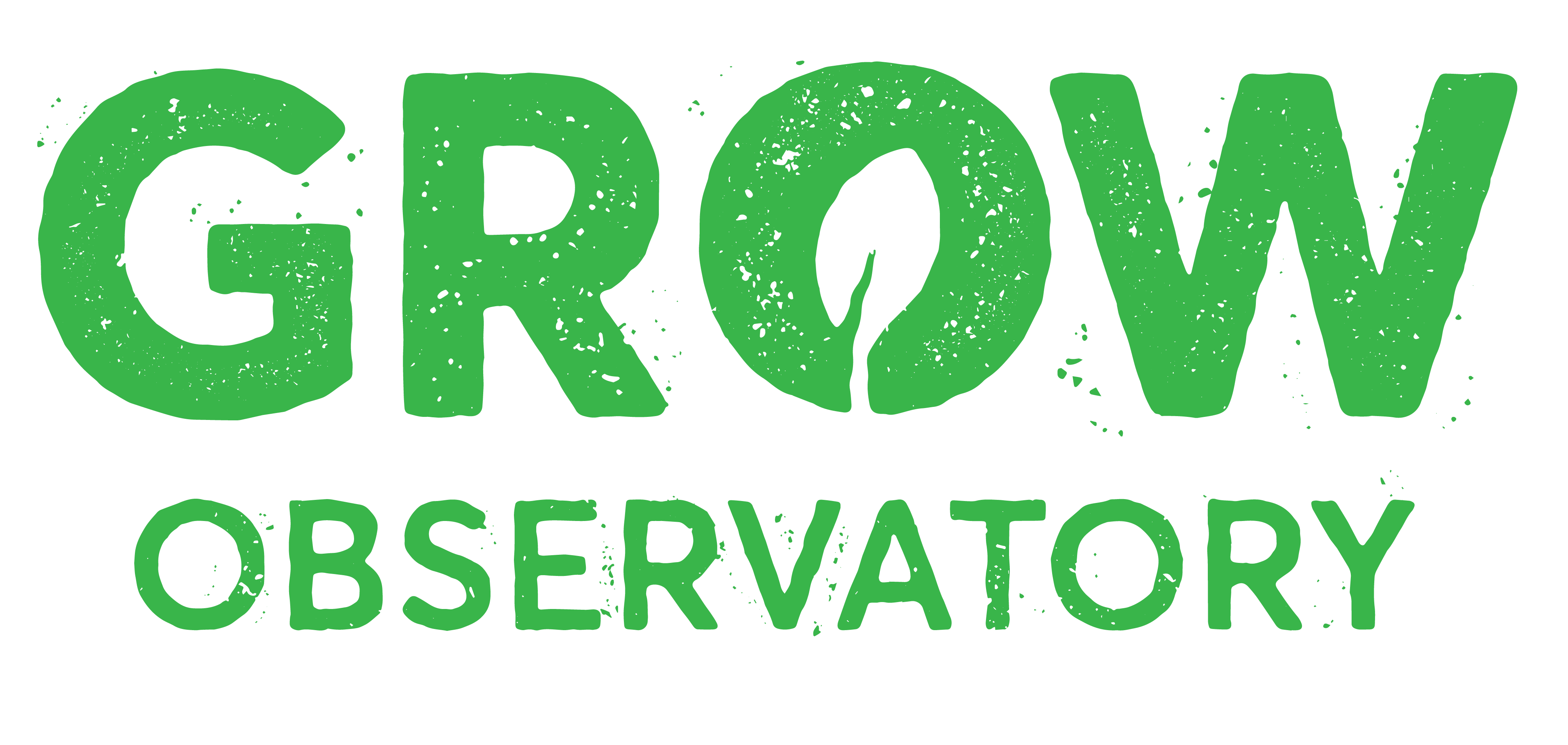
 The GROW Observatory has received funding from the European Union's Horizon 2020 research and innovation programme under grant agreement No 690199.
The GROW Observatory has received funding from the European Union's Horizon 2020 research and innovation programme under grant agreement No 690199.
References
Albrecht, M., Schmid, B., Hautier, Y. & Muller, C.B. 2012. Diverse pollinator communities enhance plant reproductive success. Proceedings.Biological sciences, 279(1748), pp. 4845-4852.
Andersson, G.K.S., Ekroos, J., Stjernman, M., Rundlöf, M. & Smith, H.G. 2014. Effects of farming intensity, crop rotation and landscape heterogeneity on field bean pollination. Agriculture, Ecosystems & Environment, 184, pp. 145-148.
Ashman, T., Knight, T.M., Steets, J.A., Amarasekare, P., Burd, M., Campbell, D.R., Dudash, M.R., Johnston, M.O., Mazer, S.J. & Mitchell, R.J. 2004. Pollen limitation of plant reproduction: ecological and evolutionary causes and consequences. Ecology, 85(9), pp. 2408-2421.
Balzan, M.V., Bocci, G. & Moonen, A. 2016. Utilisation of plant functional diversity in wildflower strips for the delivery of multiple agroecosystem services. Entomologia Experimentalis et Applicata, 158(3), pp. 304-319.
Blüthgen, N. & Klein, A. 2011. Functional complementarity and specialisation: the role of biodiversity in plant–pollinator interactions. Basic and Applied Ecology, 12(4), pp. 282-291.
Buchmann, S.L. and Nabhan, G.P., 2012. The forgotten pollinators. Island Press.
Campbell, A.J., Wilby, A., Sutton, P. & Wäckers, F.L. 2017. Do sown flower strips boost wild pollinator abundance and pollination services in a spring-flowering crop? A case study from UK cider apple orchards. Agriculture, Ecosystems & Environment, 239, pp. 20-29.
Cole, L.J., Brocklehurst, S., Robertson, D., Harrison, W. & McCracken, D.I. 2015. Riparian buffer strips: Their role in the conservation of insect pollinators in intensive grassland systems. Agriculture, Ecosystems & Environment, 211, pp. 207-220.
Danner, N., Molitor, A.M., Schiele, S., Härtel, S. & Steffan‐Dewenter, I. 2016. Season and landscape composition affect pollen foraging distances and habitat use of honey bees. Ecological Applications, 26(6), pp. 1920-1929.
Di Pasquale, G., Salignon, M., Le Conte, Y., Belzunces, L.P., Decourtye, A., Kretzschmar, A., Suchail, S., Brunet, J. & Alaux, C. 2013. Influence of pollen nutrition on honey bee health: do pollen quality and diversity matter? PloS one, 8(8), pp. e72016.
E Benjamin, F., R Reilly, J. & Winfree, R. 2014. Pollinator body size mediates the scale at which land use drives crop pollination services. Journal of Applied Ecology, 51(2), pp. 440-449.
Ewers, R.M. & Didham, R.K. 2007. The effect of fragment shape and species' sensitivity to habitat edges on animal population size. Conservation Biology, 21(4), pp. 926-936.
Forrest, J. & Thomson, J.D. 2009. Background complexity affects colour preference in bumblebees. Naturwissenschaften, 96(8), pp. 921-925.
Forup, M.L., Henson, K.S., Craze, P.G. & Memmott, J. 2008. The restoration of ecological interactions: plant–pollinator networks on ancient and restored heathlands. Journal of Applied Ecology, 45(3), pp. 742-752.
Forup, M.L. & Memmott, J. 2005. The restoration of plant–pollinator interactions in hay meadows. Restoration Ecology, 13(2), pp. 265-274.
Fründ, J., Dormann, C.F., Holzschuh, A. & Tscharntke, T. 2013. Bee diversity effects on pollination depend on functional complementarity and niche shifts. Ecology, 94(9), pp. 2042-2054.
Gallai, N., Salles, J., Settele, J. & Vaissière, B.E. 2009. Economic valuation of the vulnerability of world agriculture confronted with pollinator decline. Ecological Economics, 68(3), pp. 810-821.
Garibaldi, L.A., Requier, F., Rollin, O. & Andersson, G.K. 2017. Towards an integrated species and habitat management of crop pollination. Current Opinion in Insect Science, 21, pp. 105-114.
Ghazoul, J. 2005. Pollen and seed dispersal among dispersed plants. Biological Reviews, 80(3), pp. 413-443.
Gill, R.J., Baldock, K.C.R., Brown, M.J.F., Cresswell, J.E., Dicks, L.V., Fountain, M.T., Garratt, M.P.D., Gough, L.A., Heard, M.S., Holland, J.M., Ollerton, J., Stone, G.N., Tang, C.Q., Vanbergen, A.J., Vogler, A.P., Woodward, G., Arce, A.N., Boatman, N.D., Brand-Hardy, R., Breeze, T.D., Green, M., Hartfield, C.M., O’Connor, R.S., Osborne, J.L., Phillips, J., Sutton, P.B. & Potts, S.G. 2016, "Chapter Four - Protecting an Ecosystem Service: Approaches to Understanding and Mitigating Threats to Wild Insect Pollinators" in Ecosystem Services: From Biodiversity to Society, Part 2, eds. G. Woodward & D.A. Bohan, Academic Press, , pp. 135-206.
Goulson, D. (2017). The best garden flowers for bees. [online] Sussex.ac.uk. Available at: http://www.sussex.ac.uk/lifesci/goulsonlab/resources/flowers [Accessed 13 Dec. 2017].
Gumbert, A. 2000. Color choices by bumble bees (Bombus terrestris): innate preferences and generalization after learning. Behavioral Ecology and Sociobiology, 48(1), pp. 36-43.
Heinrich, B. 1976. Flowering phenologies: bog, woodland, and disturbed habitats. Ecology, 57(5), pp. 890-899.
Herrmann, F., Westphal, C., Moritz, R.F. & Steffan‐Dewenter, I. 2007. Genetic diversity and mass resources promote colony size and forager densities of a social bee (Bombus pascuorum) in agricultural landscapes. Molecular ecology, 16(6), pp. 1167-1178.
Hobbs, R.J. & Yates, C.J. 2003. Impacts of ecosystem fragmentation on plant populations: generalising the idiosyncratic. Australian Journal of Botany, 51(5), pp. 471-488.
Holland, J.M., Smith, B.M., Storkey, J., Lutman, P.J.W. & Aebischer, N.J. 2015. Managing habitats on English farmland for insect pollinator conservation. Biological Conservation, 182, pp. 215-222.
Holzschuh, A., Dainese, M., González‐Varo, J.P., Mudri‐Stojnić, S., Riedinger, V., Rundlöf, M., Scheper, J., Wickens, J.B., Wickens, V.J. & Bommarco, R. 2016. Mass‐flowering crops dilute pollinator abundance in agricultural landscapes across Europe. Ecology Letters, 19(10), pp. 1228-1236.
Ings, T.C., Raine, N.E. & Chittka, L. 2009. A population comparison of the strength and persistence of innate colour preference and learning speed in the bumblebee Bombus terrestris. Behavioral Ecology and Sociobiology, 63(8), pp. 1207-1218.
Isaacs, R., Tuell, J., Fiedler, A., Gardiner, M. & Landis, D. 2009. Maximizing arthropod‐mediated ecosystem services in agricultural landscapes: the role of native plants. Frontiers in Ecology and the Environment, 7(4), pp. 196-203.
Isaacs, R., Williams, N., Ellis, J., Pitts-Singer, T.L., Bommarco, R. & Vaughan, M. 2017. Integrated Crop Pollination: Combining strategies to ensure stable and sustainable yields of pollination-dependent crops. Basic and Applied Ecology, 22, pp. 44-60.
Jha, S., Burkle, L. & Kremen, C. 2013, "4.11 - Vulnerability of Pollination Ecosystem Services" in Climate Vulnerability, ed. R.A. Pielke, Academic Press, Oxford, pp. 117-128.
Kearns, C.A., Inouye, D.W. & Waser, N.M. 1998. Endangered mutualisms: the conservation of plant-pollinator interactions. Annual Review of Ecology and Systematics, 29(1), pp. 83-112.
Kennedy, C.M., Lonsdorf, E., Neel, M.C., Williams, N.M., Ricketts, T.H., Winfree, R., Bommarco, R., Brittain, C., Burley, A.L. & Cariveau, D. 2013. A global quantitative synthesis of local and landscape effects on wild bee pollinators in agroecosystems. Ecology Letters, 16(5), pp. 584-599.
Kovács-Hostyánszki, A., Földesi, R., Mózes, E., Szirák, Á., Fischer, J., Hanspach, J. & Báldi, A. 2016. Conservation of pollinators in traditional agricultural landscapes–new challenges in Transylvania (Romania) posed by EU accession and recommendations for future research. PloS one, 11(6), pp. e0151650.
Kremen, C., Williams, N.M., Bugg, R.L., Fay, J.P. & Thorp, R.W. 2004. The area requirements of an ecosystem service: crop pollination by native bee communities in California. Ecology Letters, 7(11), pp. 1109-1119.
Kremen, C., Williams, N.M. & Thorp, R.W. 2002. Crop pollination from native bees at risk from agricultural intensification. Proceedings of the National Academy of Sciences of the United States of America, 99(26), pp. 16812-16816.
Lindgren, J., Lindborg, R. & Cousins, S.A.O. 2018. Local conditions in small habitats and surrounding landscape are important for pollination services, biological pest control and seed predation. Agriculture, Ecosystems & Environment, 251, pp. 107-113.
Lindstrom, S.A., Herbertsson, L., Rundlof, M., Bommarco, R. & Smith, H.G. 2016. Experimental evidence that honeybees depress wild insect densities in a flowering crop. Proceedings. Biological sciences, 283(1843), pp. 10.1098/rspb.2016.1641.
Lopezaraiza–Mikel, M.E., Hayes, R.B., Whalley, M.R. & Memmott, J. 2007. The impact of an alien plant on a native plant–pollinator network: an experimental approach. Ecology Letters, 10(7), pp. 539-550.
Mallinger, R.E. & Gratton, C. 2015. Species richness of wild bees, but not the use of managed honeybees, increases fruit set of a pollinator‐dependent crop. Journal of Applied Ecology, 52(2), pp. 323-330.
Marini, L., Quaranta, M., Fontana, P., Biesmeijer, J.C. & Bommarco, R. 2012. Landscape context and elevation affect pollinator communities in intensive apple orchards. Basic and Applied Ecology, 13(8), pp. 681-689.
Martins, K.T., Gonzalez, A. & Lechowicz, M.J. 2015. Pollination services are mediated by bee functional diversity and landscape context. Agriculture, Ecosystems & Environment, 200, pp. 12-20.
Menz, M.H.M., Phillips, R.D., Winfree, R., Kremen, C., Aizen, M.A., Johnson, S.D. & Dixon, K.W. 2011. Reconnecting plants and pollinators: challenges in the restoration of pollination mutualisms. Trends in Plant Science, 16(1), pp. 4-12.
Montero-Castaño, A., Ortiz-Sánchez, F.J. & Vilà, M. 2016. Mass flowering crops in a patchy agricultural landscape can reduce bee abundance in adjacent shrublands. Agriculture, Ecosystems & Environment, 223, pp. 22-30.
Olesen, J.M., Bascompte, J., Elberling, H. & Jordano, P. 2008. Temporal dynamics in a pollination network. Ecology, 89(6), pp. 1573-1582.
Paton, P.W. 1994. The effect of edge on avian nest success: How strong is the evidence? Conservation Biology, 8(1), pp. 17-26.
Pufal, G., Steffan-Dewenter, I. & Klein, A. 2017. Crop pollination services at the landscape scale. Current Opinion in Insect Science, 21, pp. 91-97.
Pywell, R., Warman, E., Carvell, C., Sparks, T., Dicks, L., Bennett, D., Wright, A., Critchley, C. & Sherwood, A. 2005. Providing foraging resources for bumblebees in intensively farmed landscapes. Biological Conservation, 121(4), pp. 479-494.
Pywell, R., Warman, E., Hulmes, L., Hulmes, S., Nuttall, P., Sparks, T., Critchley, C. & Sherwood, A. 2006. Effectiveness of new agri-environment schemes in providing foraging resources for bumblebees in intensively farmed landscapes. Biological Conservation, 129(2), pp. 192-206.
Raine, N.E. & Chittka, L. 2007. The adaptive significance of sensory bias in a foraging context: floral colour preferences in the bumblebee Bombus terrestris. PLoS One, 2(6), pp. e556.
Rands, S.A. & Whitney, H.M. 2010. Effects of pollinator density-dependent preferences on field margin visitations in the midst of agricultural monocultures: A modelling approach. Ecological Modelling, 221(9), pp. 1310-1316.
Roulston, T.H. & Goodell, K. 2011. The role of resources and risks in regulating wild bee populations. Annual Review of Entomology, 56, pp. 293-312.
Russo, L., DeBarros, N., Yang, S., Shea, K. & Mortensen, D. 2013. Supporting crop pollinators with floral resources: network‐based phenological matching. Ecology and evolution, 3(9), pp. 3125-3140.
Samnegård, U., Persson, A.S. & Smith, H.G. 2011. Gardens benefit bees and enhance pollination in intensively managed farmland. Biological Conservation, 144(11), pp. 2602-2606.
Senapathi, D., Biesmeijer, J.C., Breeze, T.D., Kleijn, D., Potts, S.G. & Carvalheiro, L.G. 2015. Pollinator conservation—the difference between managing for pollination services and preserving pollinator diversity. Current Opinion in Insect Science, 12, pp. 93-101.
Smith, H., Firbank, L. & Macdonald, D. 1999. Uncropped edges of arable fields managed for biodiversity do not increase weed occurrence in adjacent crops. Biological Conservation, 89(1), pp. 107-111.
Steffan-Dewenter, I. & Kuhn, A. 2003. Honeybee foraging in differentially structured landscapes. Proceedings.Biological sciences, 270(1515), pp. 569-575.
Uyttenbroeck, R., Piqueray, J., Hatt, S., Mahy, G. & Monty, A. 2017. Increasing plant functional diversity is not the key for supporting pollinators in wildflower strips. Agriculture, Ecosystems & Environment, 249, pp. 144-155.
Vaudo, A.D., Tooker, J.F., Grozinger, C.M. & Patch, H.M. 2015. Bee nutrition and floral resource restoration. Current Opinion in Insect Science, 10, pp. 133-141.
Wei, S., Wang, R., Smirle, M.J. & Xu, H. 2002. Release of Osmia excavata and Osmia jacoti (Hymenoptera: Megachilidae) for apple pollination. The Canadian Entomologist, 134(3), pp. 369-380.
Westphal, C., Steffan-Dewenter, I. & Tscharntke, T. 2006. Bumblebees experience landscapes at different spatial scales: possible implications for coexistence. Oecologia, 149(2), pp. 289-300.
Winfree, R. 2010. The conservation and restoration of wild bees. Annals of the New York Academy of Sciences, 1195(1), pp. 169-197.
Winfree, R., Williams, N.M., Dushoff, J. & Kremen, C. 2007. Native bees provide insurance against ongoing honey bee losses. Ecology Letters, 10(11), pp. 1105-1113.
Wolf, S. & Moritz, R.F. 2008. Foraging distance in Bombus terrestris L.(Hymenoptera: Apidae). Apidologie, 39(4), pp. 419-427.
Wood, T.J., Holland, J.M. & Goulson, D. 2015. Pollinator-friendly management does not increase the diversity of farmland bees and wasps. Biological Conservation, 187, pp. 120-126.
Wratten, S.D., Gillespie, M., Decourtye, A., Mader, E. & Desneux, N. 2012. Pollinator habitat enhancement: Benefits to other ecosystem services. Agriculture, Ecosystems & Environment, 159, pp. 112-122.